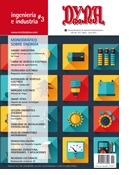A NOVEL METHOD FOR THE VIRTUAL RESTORATION OF CULTURAL RELICS BASED ON A 3D FINE MODEL
Keywords:
Restauración virtual, restauración de evidencias, características geométricas, modelo de regresión, Virtual restoration, Restoration evidence, Geometrical characteristic, Regression modelAbstract
Virtual restoration technology is widely used in the protection of cultural relics. Due to the lack of restoration evidence needed for virtual restoration of cultural relics, a 3D virtual-restoration method is proposed in this paper which uses a regression model to estimate the restoration evidence of a group of cultural relics. A predictive regression model was established by analyzing the geometric characteristics of the intact parts of a group to reflect the scaling relations among the geometric characteristics, then the geometric characteristics of the incomplete/missing parts were predicted using the proposed regression model. The precision of the virtual restoration of cultural relics can be improved significantly with this method. Lastly, the restoration of incomplete/missing fingers of the DaZu Thousand-Hand Bodhisattva statue is used as an example. To test the method, the length of an existing defective middle finger (which was 216 mm) was chosen, and the possible actual length of the middle finger was successfully estimated with the regression model (which was 235 mm with a prediction error of ±7 mm). The test results showed the proposed method is feasible for virtual restoration in a group of relics.Downloads
Published
2015-05-01
Issue
Section
ARTICULOS

